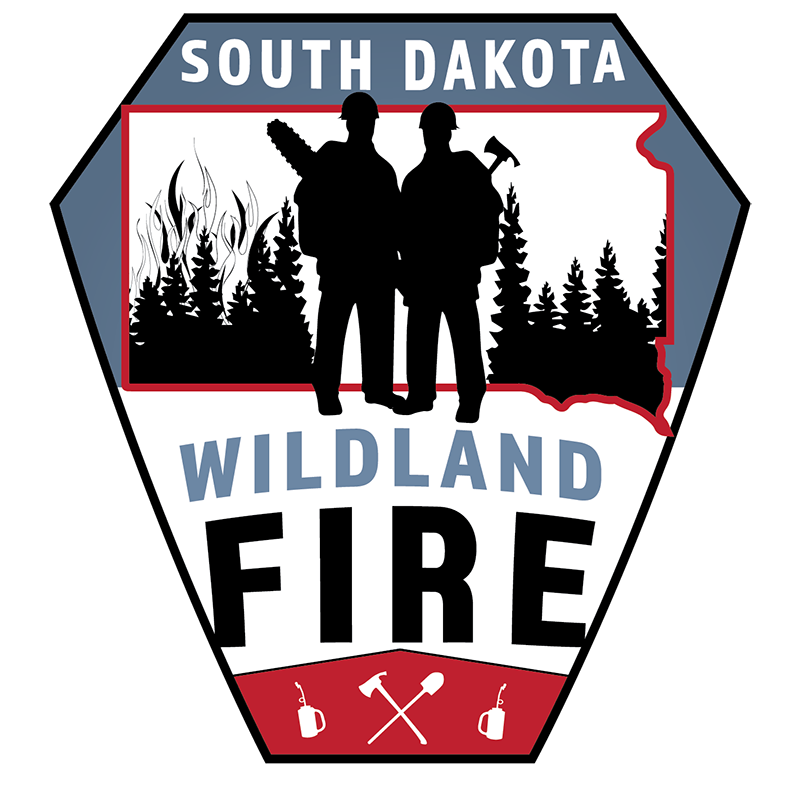
Operations
Ensuring readiness and preparedness efforts of aviation and initial attack forces in the Black Hills Forest Fire Protection District and supporting extended attack operations throughout the state of South Dakota. Four district offices and an aviation section work to deliver these services statewide and to render aid to other federal agencies, states and provinces outside of South Dakota when requested.
District Offices
Aviation
Annual Fire Action Plan
South Dakota Wildland Fire (SDWF) works to cultivate and maintain interagency relationships with federal cooperators, other states and provinces, counties, cities, rural fire districts and fire departments; both in-state and across the United States and Canada. These relationships serve as the foundation of a fire service delivery model that provides for efficiency, preparedness and fast effective response to wildfire management activities while making firefighter safety the top priority.
For a list of current interagency agreements, visit Fire Business Management.
The Great Plains Interstate Forest Fire Compact was enacted into federal law in August of 2007. The Compact grants the approval Congress to the Great Plains states and provincial governments to create, organize and maintain a resource sharing system to assist partner states and provinces in wildfire management activities. Currently, South Dakota, North Dakota, Nebraska, Wyoming, Colorado, Saskatchewan and New Mexico are members. In addition, the Great Plains Compact is a member of the Alliance of Forest Fire Compacts, which serves as the partnership organization of all seven national and international fire compacts between US and Canada.
The enacting authority for SDWF is found in Chapter 20 of Title 41 "Game Fish, Parks and Forestry" of the South Dakota Codified Law (SDCL). SDCL 41-20A is the "Fire Prevention and Suppression" Chapter and it contains most of the laws dealing specifically to SDWF and its authorities to enter into interagency cooperative agreements and take authorized actions on wildfires in the State of South Dakota or threatening the state's borders. Chapter 35 of Title 34 "Public Health and Safety" contains general statutes dealing with actions and measures to prevent or reduce range and forest fires in the state. This Chapter heading is "Range and Forest Fire Prevention" and it contains the laws that enacted the Black Hills Forest Fire Protection District, formation of the Great Plains Interstate Forest Fire Compact, and the authority for the Secretary of Agriculture to set policy for prescribed burning on state and private lands. This chapter also contains laws that date back to the first legislative session of Dakota Territory in 1862, showing the importance of fire prevention at that time in the state's history. Please consult an attorney if you have any questions concerning the applicability of these laws specific to your circumstances or jurisdiction.
Research Articles
The following are short descriptions and links to research in support of fire suppression and prevention activities carried out by SDWF.
This article describe some geospatial relationships that can influence where wildfires start on private and state lands within the Black Hills Forest Fire Protection District
The Influence of Geospatial Factors on Wildfire Occurrence in the Black Hills of South Dakota
This article discusses some naturally occurring factors that are common to slash pile burn escaped fires in the Black Hills of South Dakota
Reducing Wildfire Ignitions from Open Burning in the Black Hills of South Dakota
The report studies some factors that drive large fire costs in the Black Hills of South Dakota
Cost Analysis of Wildfire Suppression Activities in the Black Hills of South Dakota
This report describes the level of effort that was put forth by local VFD's Fall River and Custer County, along with Custer Ranger District of the Black Hills NF and State Forestry Fire units in June and July of 1974. Author of the article worked for South Dakota State Forestry at the time, however author is unknown. This report was filed as appeal to a denial by FEMA in granting Fire Management Assistance Grant to help the State of South Dakota pay for fire suppression costs. The Black Hills has not seen a reoccurrence of that level of initial attack fire activity over that same time period since that date. This serves as a historical lesson of what could happen in the future.
Argyle Fire Chronology
This article describes different fire service delivery models currently utilized in rural areas across the state.
Rural Fire Service Delivery Models in South Dakota
Call 911 to report a smoke or fire sighting.




